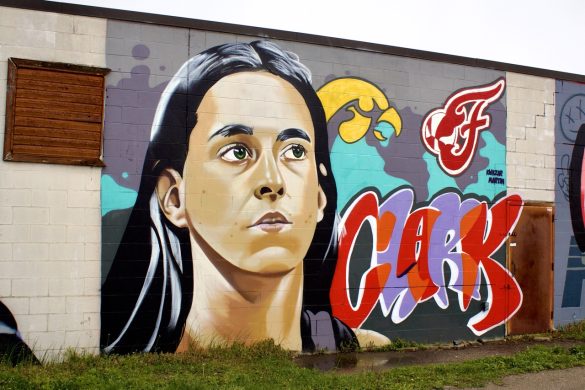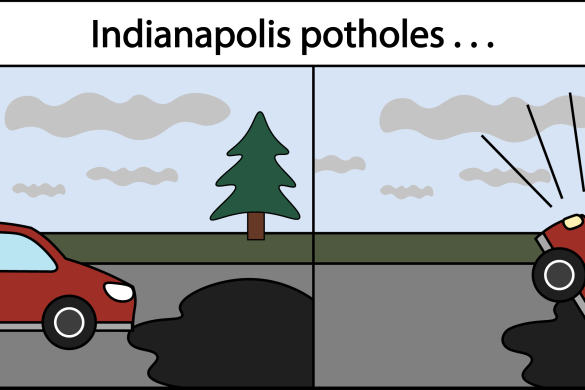According to a study done by the Public Religion Research Institute, 75 percent of white people in America don’t have any non-white friends. This number came as a shock to me, seeing as it is 2019, and I would like to think that people are expanding their social groups to be inclusive to minorities. As a white woman, I find it vital to be an ally to minority communities, such as the African-American community and the LGBTQ community. I urge others to work on learning more about the lives of others who may not have a similar lifestyle because it embraces inclusivity.
Becoming an ally is one of the best decisions I have made thus far. I feel as though it is important for everyone to be educated on a way of life that they may never experience, in order to be more accepting of other ways of life. Allies have the opportunity to educate and make a difference in the world. By educating, more people may begin to think with an open and accepting mind.
“Any civil rights movement cannot thrive without the support of allies…In the legal profession, having allies can make all the difference,” said the National LGBTBar Association and Foundation.
Throughout my time at the University of Indianapolis, I have met many different types of people, most of different races, religious backgrounds and sexualities. This change in atmosphere provided me with the opportunity to advocate for social groups that I may not be a part of, but I support. I found it very important that I became an ally to these groups, now that I am surrounded by a variety of people.
One group in particular that I wanted to get involved with when I first came to UIndy was the Black Student Association. To many people, this came off as weird because a white woman being a member of the Black Student Association may come across as an oddity. Well, to put it simply, I want to show this community of people, many of whom I am close friends with, that they have my full support. Oftentimes, people will not go so far as to join a club to show support, but I did not want just to support them with my attendance. I wanted to learn.
There is more to being an ally than just showing up. There are many do’s and don’t’s when it comes to being an ally, and Amélie Lamont, a product designer and activist, lays a list of these out perfectly in her “Guide to Allyship.”
The first on the list of don’t’s is this: Do not expect to be taught or shown. Take it upon yourself to use the tools around you to learn and answer questions. This is something I began to do quickly as I started meeting and becoming friends with more people in the black community. I wanted to understand certain aspects of their lifestyles and cultures I was not yet familiar with. Instead of asking questions, I did research so that I could try to get a better understanding of my friends and peers. Making an effort to understand more about those around you in turn makes them more included in the conversation.
Many of the bullet points on the list of do’s are important to know prior to becoming an ally. Two of the most important are these: “Do be aware of your implicit biases,” and “Do your research to learn more about the history of the struggle in which you are participating.”
In order to be a successful ally, it is important to understand biases. For example, I am white. That means due to the fact that I am white, I am unable to relate to a black person in terms of oppression and inequality because I have not experienced life in the same way that that person has. Oftentimes, a bias will come from our own inability to relate to a person, and those biases must be fully understood before we can attempt to become an ally.
Knowing the history is important, whether the history of slavery and all that came with it or the history of inequality between our communities and how that is relevant today. Most important of all, is to realize how the history affects the current status of minorities and other groups.
This is not only important, however, in order to have allyship with different communities, it is vital. Becoming an ally to any group means knowing the history of the group, including all impactful situations that may have taken place throughout its history.
One of the other significant do’s that Lamont listed is this: “Do the outer work and figure out how to change the oppressive systems.”
This is the most important bullet on the list, but also the most difficult to accomplish. One part about being an ally is understanding how the system works in and out of favor of the group and figuring out ways to change that.
Again, research is necessary to understand how the system works, and research must be done on past cases in which the system has impacted the specific group.
I have looked at a number of cases involving the judicial system and the black community and analyzed them in order to understand where the black community stands in the system. Once I was able to get a better understanding of our societal differences, I was able to be a better advocate.
If these guidelines are understood, along with others not included in Lemont’s guide, it will be easier to become an ally. However, the bullet points listed are not the only guides that should be considered. There are other aspects to become an ally that are common sense. Many social groups today can use allies because they help to support minority groups from an outside perspective. However, being an ally has to be done for the right reasons.
If this is done for a selfish reason like acceptance from a particular community, then it will be impossible to ever fully be a good ally. The only way to truly be a good ally is having the desire to know more about the way another person experiences the world.







